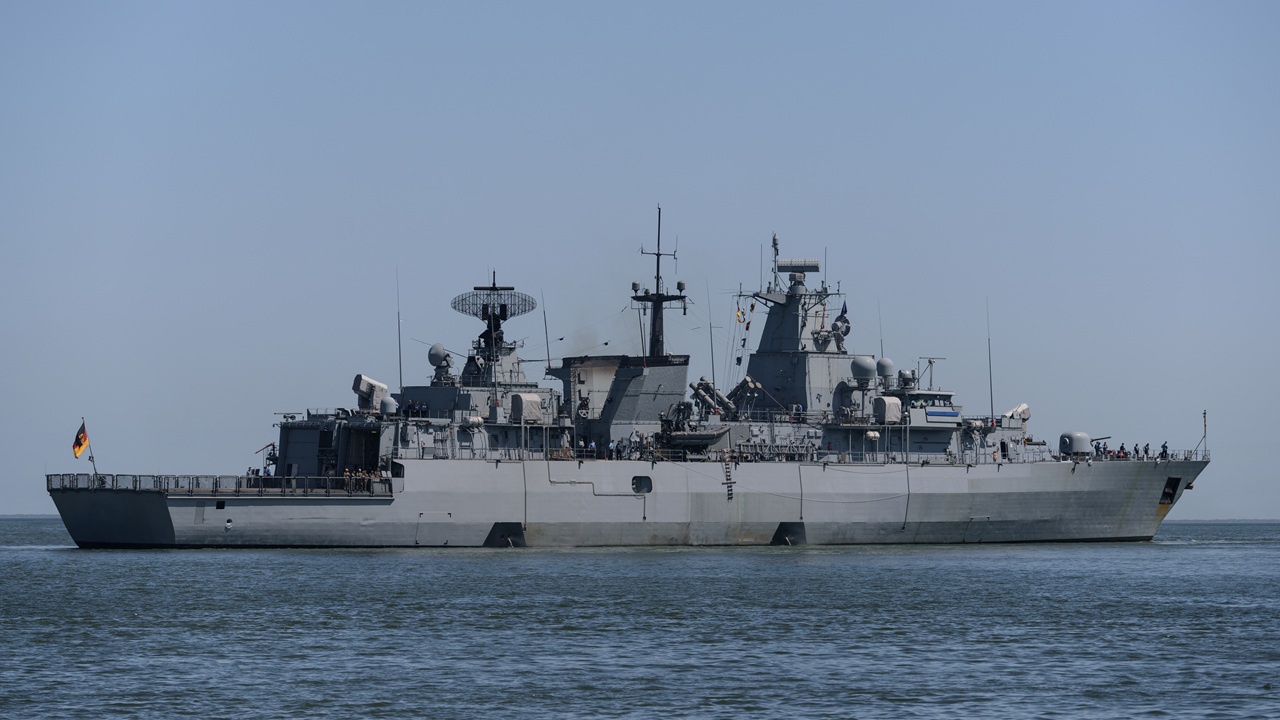Politics
German Navy Advances Laser Weapons with Successful Testing

The German Navy has made significant strides in naval defense technology by successfully testing a new laser weapon system designed to engage a variety of aerial and surface targets. Conducted on the Sachsen frigate, these tests demonstrate the capabilities of a directed energy weapon developed in collaboration with Rheinmetall and MBDA.
During the testing phase, which spanned over a year, the laser weapon system underwent more than 100 live-fire trials, showcasing its potential to counter threats such as guided missiles, drones, and other unmanned aerial systems. These trials confirmed the weapon’s high reaction speed and accuracy in real operational conditions, marking a milestone for European naval defense.
Capabilities and Technical Specifications
The directed energy weapon operates with a power output of 20 kilowatts, making it particularly effective against smaller targets, including drones and missile threats. Rheinmetall noted that the system successfully engaged targets without relying on terrain for laser beam support, demonstrating its precision and operational versatility.
In a press release, Rheinmetall stated, “Successful tests conducted on the frigate Sachsen proved the demonstrator’s tracking capability, effectiveness and precision under real operational conditions for the first time in Europe.” This advancement in laser technology underscores the growing emphasis on directed energy systems as a cost-effective solution in modern warfare.
The system’s design allows for future upgrades, potentially increasing its power to intercept larger threats. This adaptability is crucial, especially in light of the rising drone and missile threats faced by naval forces globally.
Strategic Importance in Current Conflict Zones
The development of this laser weapon comes amid escalating tensions in regions such as the Red Sea, where naval forces encounter significant threats from drones and anti-ship missiles. Since 2024, the Yemen-based Houthi insurgents have targeted maritime traffic near critical trade routes, including the Gulf of Aden and the Suez Canal.
As traditional missile defense systems can be prohibitively expensive, laser weapons provide a budget-friendly alternative. A single shot from a directed energy weapon costs approximately $10, in stark contrast to the cost of conventional missiles, such as the MIM-104 Patriot, which can exceed $3 million. This cost disparity highlights the strategic advantages offered by directed energy systems in countering low-cost threats.
The collaboration between Rheinmetall and MBDA involves a division of responsibilities, with MBDA focusing on target detection and tracking. Rheinmetall oversees the aiming system and the integration of the weapon on naval vessels, ensuring a comprehensive approach to modern naval defense.
As the German Navy continues its operational testing of this laser weapon, it signifies a pivotal shift toward embracing advanced technology in maritime warfare. The successful deployment of such systems could reshape naval combat dynamics, offering new strategies for engagement in increasingly complex conflict environments.
With ongoing developments in laser technology, the potential for future enhancements and applications appears promising, paving the way for a new era in naval defense.
-

 Science3 weeks ago
Science3 weeks agoIROS 2025 to Showcase Cutting-Edge Robotics Innovations in China
-

 Politics2 weeks ago
Politics2 weeks agoJudge Considers Dismissal of Chelsea Housing Case Citing AI Flaws
-

 World3 weeks ago
World3 weeks agoBravo Company Veterans Honored with Bronze Medals After 56 Years
-

 Lifestyle3 weeks ago
Lifestyle3 weeks agoStone Island’s Logo Worn by Extremists Sparks Brand Dilemma
-

 Health3 weeks ago
Health3 weeks agoStartup Liberate Bio Secures $31 Million for Next-Gen Therapies
-

 Top Stories3 weeks ago
Top Stories3 weeks agoIndonesia Suspends 27,000 Bank Accounts in Online Gambling Crackdown
-

 Health3 weeks ago
Health3 weeks agoTop Hyaluronic Acid Serums for Radiant Skin in 2025
-

 Sports3 weeks ago
Sports3 weeks agoMel Kiper Jr. Reveals Top 25 Prospects for 2026 NFL Draft
-

 World3 weeks ago
World3 weeks agoHoneywell Predicts Record Demand for Business Jets Over Next Decade
-

 Lifestyle3 weeks ago
Lifestyle3 weeks agoMary Morgan Jackson Crowned Little Miss National Peanut Festival 2025
-

 Sports3 weeks ago
Sports3 weeks agoYamamoto’s Mastery Leads Dodgers to 5-1 Victory in NLCS Game 2
-

 Science3 weeks ago
Science3 weeks agoArizona State University Transforms Programming Education Approach









